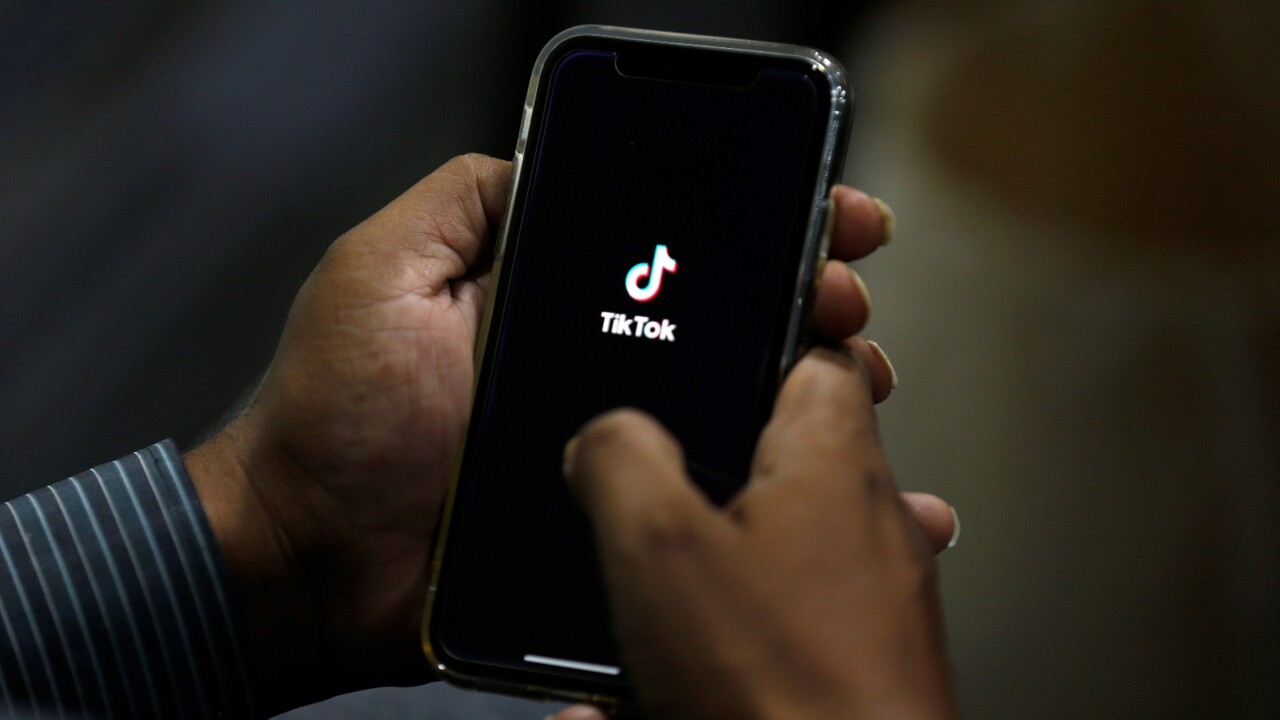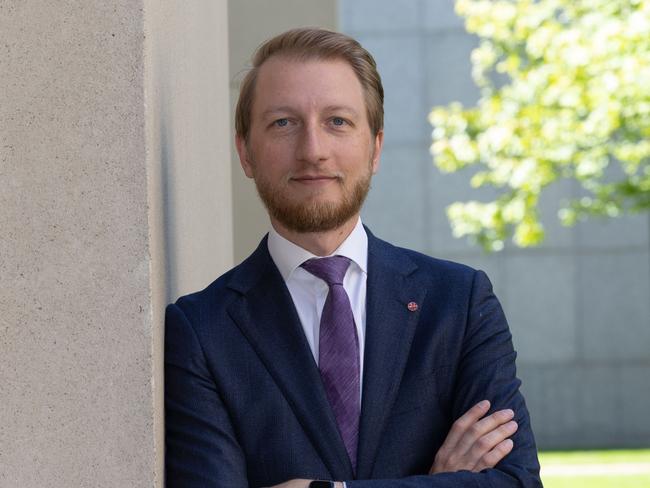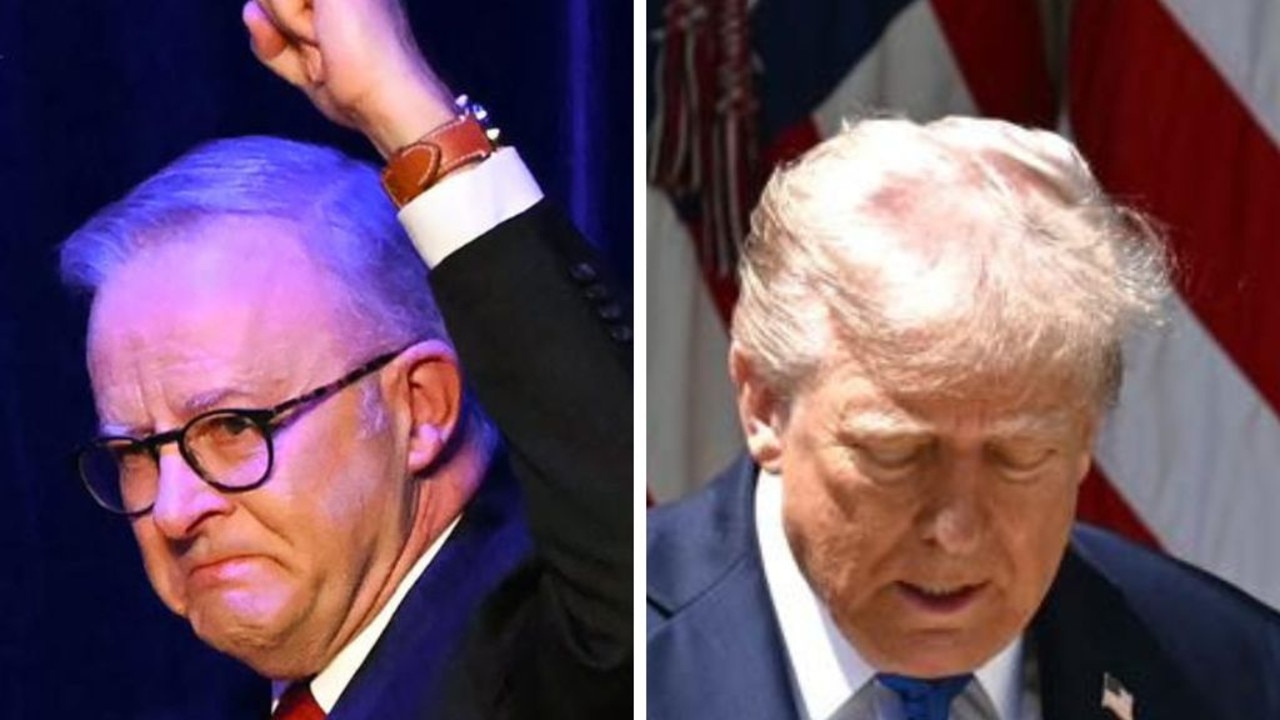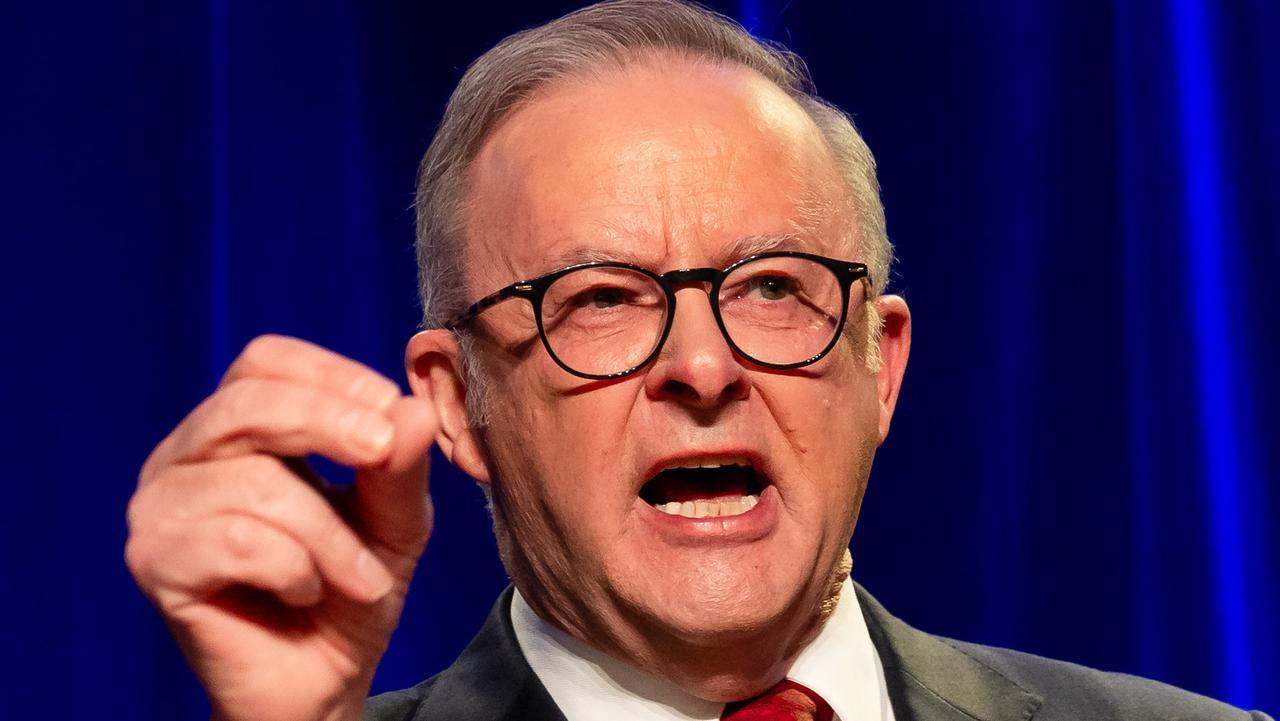Anthony Albanese bans TikTok on government devices: What’s next
Calls to consider a wholesale ban of TikTok have split Australia’s politicians. See why and what’s next.

National
Don't miss out on the headlines from National. Followed categories will be added to My News.
Calls to consider a wholesale ban of TikTok in Australia have been rejected amid warnings the move would alienate younger users and fail to address data security concerns on other social media apps.
A ban on all government devices installing the popular social media platform was confirmed by Attorney-General Mark Dreyfus on Tuesday following advice from security and intelligence officials.
“After receiving advice from intelligence and security agencies, today I authorised the Secretary of the Attorney-General’s Department to issue a mandatory direction under the Protective Security Policy Framework to prohibit the TikTok app on devices issued by Commonwealth departments and agencies,” he said.
“Exemptions will only be granted on a case-by-case basis and with appropriate security mitigations in place.”

Mr Dreyfus said the government had recently received the Review into Foreign Interference through Social Media Applications and confirmed recommendations from the report “remain under consideration”.
The move brings Australia into line with its Five Eyes security partners, but the Albanese Government is not following the US in considering a total TikTok ban.
The US Congress is currently consider a bill that would go even further by banning TikTok and any other platforms with links to foreign governments entirely.
Opposition cyber security spokesman James Paterson welcomed the app’s prohibition on government devices, but said “all options need to be on the table” when asked if it should be extended.
“TikTok is owned by ByteDance, a company which is very close to the Chinese Communist Party and is subject to the intelligence laws of China,” he said.
Mr Paterson said it would be “trivially easy” for the CCP to order the suppression of content on the platform or to order data harvested from Australian users be handed over.
TikTok general manager Australia and New Zealand, Lee Hunter said he was “disappointed” by the ban as there was “no evidence” the app posed a security risk.

Greens digital rights spokesman David Shoebridge said the narrow focus on TikTok’s data collection signalled a worrying lack of understanding of the risks “pretty much every other social media platform” posed to Australians.
“Each of these apps has largely unlimited, unregulated access to our data, and the Albanese Government seems quite comfortable with that,” he said.
Mr Shoebridge said young Australians would “rightly” resist a total TikTok ban, which he argued would not actually deal with the broader issue of data rights and privacy.
“Secure the data, don’t ban the platform,” he said.

Cyber security expert Susan McLean backed the TikTok government device ban, and said states should extend it to law enforcement and other public sector jobs like healthcare.
“Either China is a concern, or it’s not. It clearly is so the response has to be applied across the board,” she said.
But Ms McLean said she did not think Australia would end up banning the app entirely, instead encouraging users to educate themselves and minimise their exposure to data harvesting.
Prior to the government device ban announcement, 66 federal MPs and Senators had TikTok accounts, including nine Greens, 31 Labor and 18 Coalition members.
Among the most followed accounts are Labor MP Julian Hill with about 146,900 followers, One Nation Senator Pauline Hanson with 24,600, Katter’s Australia Party MP Bob Katter with 24,200 and Labor Environment Minister Tanya Plibersek with 15,400.

On Tuesday NDIS Minister Bill Shorten deleted his account, which had about 12,000 followers, having previously said he was happy to give up being on TikTok “if we (the government) need to set an example”.
Under the ban politicians and public servants are able to continue using the platform on private phones or on a computer web browser.
Agencies with major public facing roles such as health awareness and tourism will also be able to continue creating and sharing content on the platform, provided it is not done so from a government-issued device.
The ban does not apply to public employees at entities like the ABC or SBS, and other exemptions can be granted in special circumstances.
WHICH COUNTRIES ARE BANNING TIKTOK?
Countries around the world have been starting to ban people from using the Chinese-owned app, with the US’ rules to take affect this week.
The bans at this stage largely relate to the use of TikTok on government-issued devices, more than bans for personal use.
It comes after media reports confirmed TikTok user data was being accessed by staff in China, putting it within reach of Chinese laws that can compel companies to hand over information to the government.
And follows an admission from the company that its employees use the app to spy on reporters who broke those stories to track down their sources.

TikTok chief executive Shou Zi Chew told a US congressional hearing this week that engineers at the company’s Chinese parent company ByteDance would have access to some user data until TikTok’s $US1.5bn “Project Texas” privacy overhaul was completed.
“I have seen no evidence that the Chinese government has access to that data,” he said.
“They have never asked us, we have not provided it.”
The US, UK, Scotland, Canada, New Zealand, France and the European Parliament have banned TikTok on staff and government or parliament-related devices.
WHAT’S AT STAKE?
TikTok has more than 1 billion users worldwide.
There are more than 8 million Australian users but there are more than 113 million from the US alone.
The social media giant has grown to be more than just a lighthearted platform for entertainment and viral short dance videos.
It’s popularity has led to many businesses, politicians, activists, to name a few, turning to the platform as a means of communicating with different audiences, namely younger demographics.

A lot of start-ups and people in creative industries are making a name for themselves and getting sponsorship deals as a result.
One top Aussie TikToker, Ella Watkins, revealed to News Corp that she made close to half a million dollars from paid content and deals last year.
So banning TikTok could, as protesters argued outside US Congress, jeopardise people’s livelihoods.
It could also risk communication channels individuals have come to rely on.
There are concerns that banning the platform impinges of people’s freedom of expression, leading some to question democratic principles and creation of nanny-like states.
But arguably the biggest concern is around national security – and whether using the platform is putting Aussies’ safety at risk.
FBI director Christopher Wray argues TikTok is: “a tool that is ultimately within the control of the Chinese government … It screams out with national security concerns”.
WHAT DOES IT MEAN FOR KIDS USING TIKTOK?
Australia’s TikTok ban is on the use of the social media platform on government devices.
The government is not currently considering any widespread bans on TikTok.
But parents of those on the platform have been encouraged to have open conversations with their children about rules and what to do when things go wrong.
TikTok brought in some new safety features for young users in February designed to reduce screen time and help parents, the platform said.

The three main changes were: a 60-minute daily screen time limit on accounts held by people under 18 years old; screen time dashboards incorporated into the ‘Family Pairing’ feature; and functionality for parents to mute notifications for their children.
TikTok head of Trust and Safety Cormac Keenan said the changes were designed to help families.
“We believe digital experiences should bring joy and play a positive role in how people express themselves, discover ideas and connect,” he said.
But it prompted a warning from Aussie digital safety expert Kirra Pendergast against parents being complacent with the new changes.
“While these new features are seen as beneficial for the digital wellbeing of children, we must never set and forget,” the founder of Safe on Social said.
“Please continue to have open conversations about rules, limits and what to do when things go wrong.
“There has been no word on the restriction of actual content. Kids may see wildly inappropriate, violent or disturbing content in 60 minutes.”
More Coverage
Originally published as Anthony Albanese bans TikTok on government devices: What’s next




